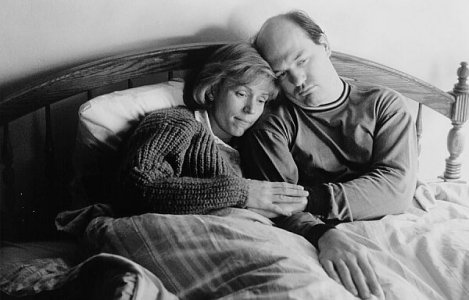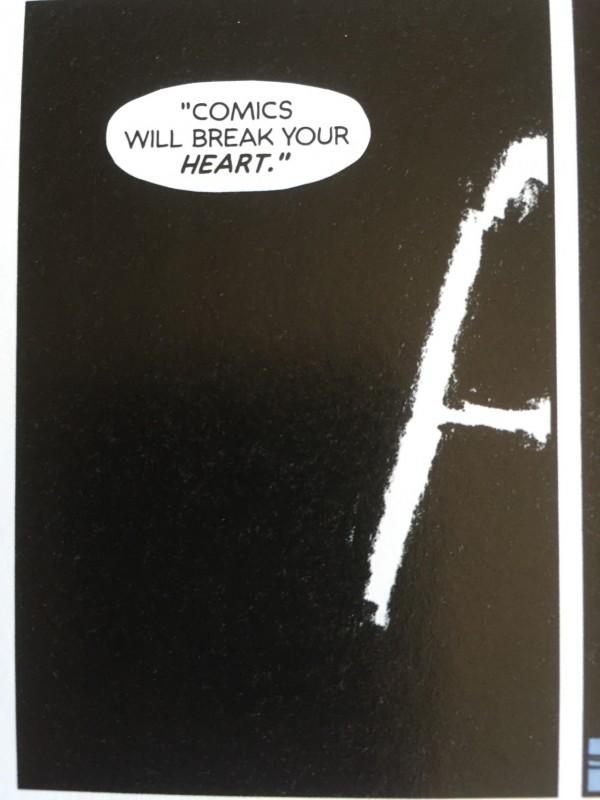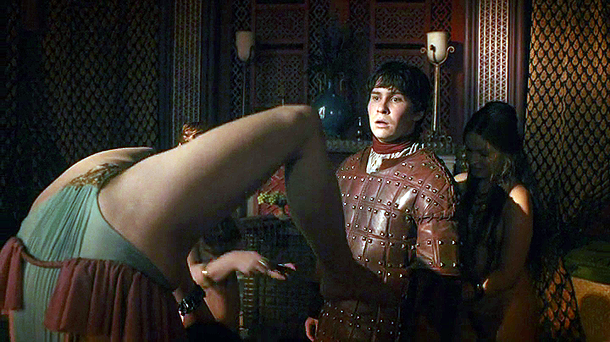Minnesota Normal
 Matt Fraction posted this on Tumblr yesterday on the subject of Fargo, the 1996 Coen Brothers movie about a kidnapping in Minnesota, and the subsequent investigation by a heavily-pregnant police sheriff Marge Gunderson (Frances McDormand). He (quite rightly, in my opinion) defends the film and the filmmakers from the charges of being ‘arch’ and ‘mocking’. In reaction, here are some thoughts of my own.
Matt Fraction posted this on Tumblr yesterday on the subject of Fargo, the 1996 Coen Brothers movie about a kidnapping in Minnesota, and the subsequent investigation by a heavily-pregnant police sheriff Marge Gunderson (Frances McDormand). He (quite rightly, in my opinion) defends the film and the filmmakers from the charges of being ‘arch’ and ‘mocking’. In reaction, here are some thoughts of my own.
(If you haven’t seen Fargo, go see it, because the following piece – like Matt Fraction’s – contains spoilers. And also because it’s a really good film that everyone should see.)
Formally, the film works in the same way as an episode of Columbo, i.e. it is one of those police procedurals in which we, the audience, see every detail of the crime, and know ‘whodunnit’ before the detective, and get to watch the detective figure it out. But whereas Columbo is a classical detective in other respects – he’s near-supernaturally insightful, always one jump ahead – Marge Gunderson is hardly a detective at all. Or rather, she’s a detective in a way that is far more like real life. She’s never one jump ahead. She amasses evidence and she follows it. She doesn’t display any leaps of insight. She doesn’t really deduce anything. There is a famous bit where she corrects another officer’s mistake (the “I’m not sure I agree with you 100% on your police work there Lou” bit) but it isn’t played to emphasize her special abilities. On the contrary, it emphasizes her basic competence over the routine incompetence of one of her colleagues. In other respects, she doesn’t distinguish herself. At first, she makes nothing of Jerry Lundergaard’s attempts to fabricate licence plates, despite being left alone with – and noticing – the pad on which he’s doing it. And why should she? She has no context that would make any reasonable person see it was significant. The usual leap of imagination of the detective is a contrivance. It’s actually the writer feeding insights to the detective at strategic moments in order to make the plot work. She sees the framed photo of Mrs Lundergaard in Jerry’s office and there is no standard cop-eureka moment when, as she stares at the photo, she suddenly puts things together. Why should there be? She doesn’t know Mrs Lundergaard is missing yet. She catches Grimsrud not because she tracks him down but because she happens to drive past his hideout and recognise the ‘tan Ciera’ parked outside.
The film resolutely resists depicting Marge as special in any way. She isn’t particularly clever, insightful, glamorous or charismatic. Indeed, by conventional standards (by which I mean standard conventional depictions, which the movie flouts and undermines) she looks the opposite of all these things. Extraordinarily unextraordinary, she is simply competent at her job, fond of her husband, polite to her colleagues, etc. Moreover, she is vulnerable to the frailties of the flesh in ways that we real people know full well (even if we don’t all know what it’s like to be pregnant) but to which movie people routinely display superhuman indifference.…

 You know the drill, I’m sure.
You know the drill, I’m sure.  Weird Kitties fizzled out, but I had a few spare reviews lying around and Jane’s holiday is going to run one more week, so here they are.
Weird Kitties fizzled out, but I had a few spare reviews lying around and Jane’s holiday is going to run one more week, so here they are.
 As the science fiction community mutters “I thought MidAmericon said nominations would open in early January” with baited breath, I note that certain fascist pricks have begun to ramp up their performative chortling. So I figured “why not write a mildly trolling open letter to someone else entirely?”
As the science fiction community mutters “I thought MidAmericon said nominations would open in early January” with baited breath, I note that certain fascist pricks have begun to ramp up their performative chortling. So I figured “why not write a mildly trolling open letter to someone else entirely?” When I cover it in Last War in Albion, I am inevitably going to have to suggest that Phonogram was a magical ritual to murder David Bowie. Part of this will be a straightforward and well-reasoned technical argument based on The Immaterial Girl’s meticulously rendered and devastatingly well-structured invocation of Michael Jackson’s death, and another part will be the fact that Bowie’s cancer diagnosis would have come right around when WicDiv #1 hit, with Lucifer’s death literally coming ten days after the debut of “Sue (Or in a Season of Crime)” (“Sue, the clinic called /The x-ray’s fine / I brought you home,” although for the purposes of Phonogram the lyric you’d want is “Sue, I found your note / That you wrote last night / It can’t be right / You went with him”), and of course a big part is just going to be a big influence-based dig through the primary source material in a slightly self-parodic attempt to factually evaluate Gillen’s claims about Kenickie.
When I cover it in Last War in Albion, I am inevitably going to have to suggest that Phonogram was a magical ritual to murder David Bowie. Part of this will be a straightforward and well-reasoned technical argument based on The Immaterial Girl’s meticulously rendered and devastatingly well-structured invocation of Michael Jackson’s death, and another part will be the fact that Bowie’s cancer diagnosis would have come right around when WicDiv #1 hit, with Lucifer’s death literally coming ten days after the debut of “Sue (Or in a Season of Crime)” (“Sue, the clinic called /The x-ray’s fine / I brought you home,” although for the purposes of Phonogram the lyric you’d want is “Sue, I found your note / That you wrote last night / It can’t be right / You went with him”), and of course a big part is just going to be a big influence-based dig through the primary source material in a slightly self-parodic attempt to factually evaluate Gillen’s claims about Kenickie.